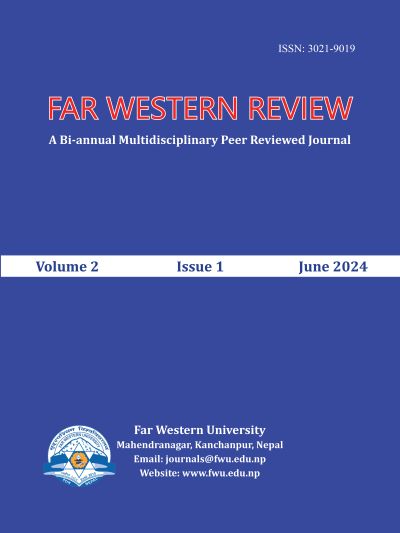Influence of Overconfidence and Loss Aversion Biases on Investment Decision: The Mediating Effect of Risk Tolerance
DOI:
https://doi.org/10.3126/fwr.v2i1.70499Keywords:
Overconfidence, loss aversion, risk tolerance, investment decisionAbstract
This study aims to examine the effects of overconfidence and loss aversion on Investing behavior with the mediating role of risk tolerance. Employing a quantitative methodology, data was collected using a structured questionnaire featuring multiple choice and Likert scale questions. Convenience sampling was used to gather responses, and the data was analyzed through multiple regression techniques. The mediating effect of risk tolerance was measured using Andrew F. Hayes’ Process V4.2 Macro. The study found that risk tolerance partially mediates the relationship between overconfidence and investment decision-making behavior, with both direct and indirect effects being statistically significant. Similarly, the study found that loss aversion has a statistically insignificant direct effect on investment decisions, while its indirect effect through risk tolerance is statistically significant. The study discloses that risk tolerance partially mediates the relationship between overconfidence and investment decision behavior, while it fully mediates the relationship between loss aversion and investment decision making behavior. Risk tolerance significantly influences investment decisions, influencing both overconfidence and loss aversion, while loss aversion’s influence is partially explained by risk tolerance.
Downloads
Downloads
Published
How to Cite
Issue
Section
License

This work is licensed under a Creative Commons Attribution-NonCommercial 4.0 International License.
CC BY-NC: This license allows reusers to distribute, remix, adapt, and build upon the material in any medium or format for noncommercial purposes only, and only so long as attribution is given to the creator.




